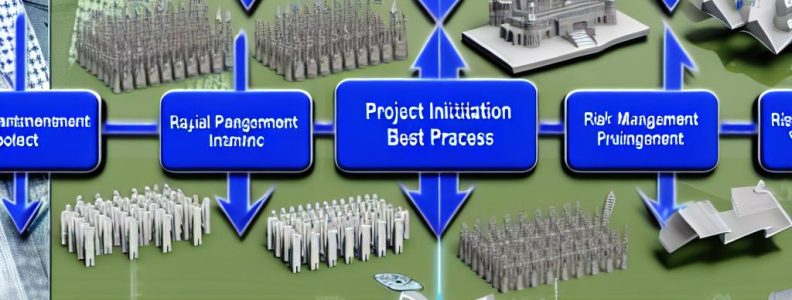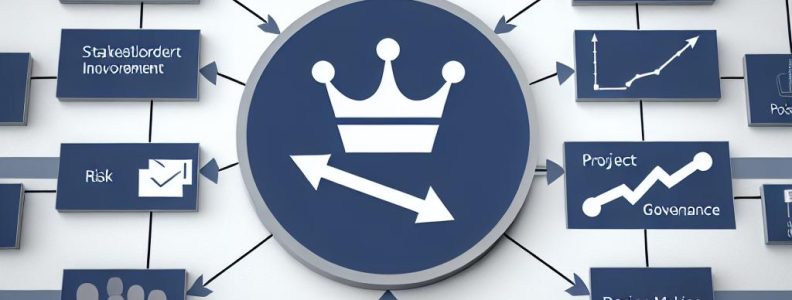Understanding the Business Case in PRINCE2
The business case holds significant importance in the PRINCE2 project management framework. It stands as a pivotal document that justifies the initiation and continuation of a project. Acting as a bridge between an organization’s strategic objectives and the operational undertaking of specific projects, the business case ensures that each project delivers suitable returns on investment by thoroughly considering its benefits, costs, and associated risks throughout the project lifecycle. This document is instrumental from the inception of the project until its completion, ensuring alignment with strategic goals and continuous viability against potential changing circumstances.
The Role of the Business Case
In the PRINCE2 methodology, the business case is intended to be an evolving document rather than a fixed one. As a project progresses, new information and changing environments may influence the project’s direction or even its viability. The business case is thus continually refined and updated to reflect these changes, acting as the cornerstone for decision-making processes. It provides a justified rationale for pursuing a project, helping members of the project board to determine the project’s value based on value for money principles. This document is not just a foundation at the start but remains a central reference point whenever changes occur during the project. Its presence helps in evaluating the continuing viability of the project, ensuring resources are being utilized effectively and efficiently.
Components of the Business Case
To serve its purpose effectively, a business case in the context of PRINCE2 encompasses several critical components, each essential for providing a full overview of the project’s rationale and expected outcomes:
1. Reasons: They form the core justification for embarking on the project at hand. This section outlines the specific challenges or opportunities that the project is addressing, defining the business need that prompted the initiation of this project.
2. Options: This section explores different methodologies for achieving project objectives, ensuring that the approach chosen is not only effective but also efficient. It usually discusses various options, including maintaining the status quo or the “do nothing” scenario, explaining the rationale behind selecting the preferred option among them.
3. Benefits: A clear articulation of the projected benefits is necessary, accompanied by a strategy for how these benefits will be measured and evaluated. The aim is to understand what improvements or value additions are expected post-project completion.
4. Risks: All potential challenges or risks that might affect the project’s progression or success are identified here. This section not only highlights potential risks but also outlines strategies and plans for mitigating those risks, ensuring swift and effective responses should challenges arise.
5. Costs: This component provides a detailed financial analysis that includes a breakdown of the anticipated costs involved in executing the project. It helps in verifying whether the project remains an economically viable investment.
6. Timescale: An accurate estimate of the project’s timeline is crucial for planning and execution. This section lays out the anticipated duration and highlights key milestones, ensuring adequate time management throughout the project.
Maintaining the Business Case
The dynamic nature of the business case requires continuous monitoring and updating. Regular reviews ensure its relevance and accuracy based on the evolving project environment. In PRINCE2, such updates are crucial particularly at stage boundaries — structured checkpoints where the project’s progress, performance, and ongoing alignment with the business case are formally reviewed. These reviews examine whether the project still stands justified against its initial aims and goals, addressing any new developments or shifts in the organization’s strategic direction. The assurance processes built into PRINCE2 support this monitoring, continuously evaluating whether the project remains aligned with the business case or if any adjustments are necessary to maintain alignment.
Conclusion
In summary, the business case is an indispensable component of the PRINCE2 methodology, underpinning the alignment of every project with the strategic objectives of the organization. Its well-documented rationale underscores the necessity of ensuring projects deliver expected benefits while judiciously managing resources and risks. Adaptable by design, the business case allows for systematic updates and reviews, providing a reflective and responsive tool geared toward maintaining alignment with the organization’s ever-evolving needs and external environments. To excel in project management using PRINCE2, understanding and maintaining a robust business case is paramount. For those seeking further insights and comprehensive guidelines on crafting and administering business cases, official resources such as PRINCE2 publications offer valuable information.










